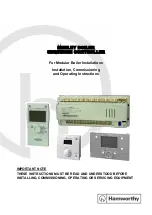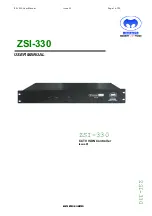The SAI receiver includes a FIFO reset that synchronizes the FIFO read pointer to the
same value as the FIFO write pointer. This empties the FIFO contents and is to be used
after the RCSR[FEF] is set and any remaining data has been read from the FIFO, and
before the RCSR[FEF] is cleared. The FIFO reset is asserted for one cycle only.
48.4.3 Synchronous modes
The SAI transmitter and receiver can operate synchronously to each other.
48.4.3.1 Synchronous mode
The SAI transmitter and receiver can be configured to operate with synchronous bit clock
and frame sync.
If the transmitter bit clock and frame sync are to be used by both the transmitter and
receiver:
• The transmitter must be configured for asynchronous operation and the receiver for
synchronous operation.
• In synchronous mode, the receiver is enabled only when both the transmitter and
receiver are enabled.
• It is recommended that the transmitter is the last enabled and the first disabled.
If the receiver bit clock and frame sync are to be used by both the transmitter and
receiver:
• The receiver must be configured for asynchronous operation and the transmitter for
synchronous operation.
• In synchronous mode, the transmitter is enabled only when both the receiver and
transmitter are both enabled.
• It is recommended that the receiver is the last enabled and the first disabled.
When operating in synchronous mode, only the bit clock, frame sync, and transmitter/
receiver enable are shared. The transmitter and receiver otherwise operate independently,
although configuration registers must be configured consistently across both the
transmitter and receiver.
Functional description
K22F Sub-Family Reference Manual , Rev. 3, 7/2014
1282
Freescale Semiconductor, Inc.


















